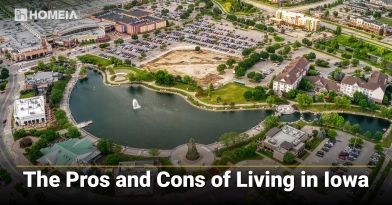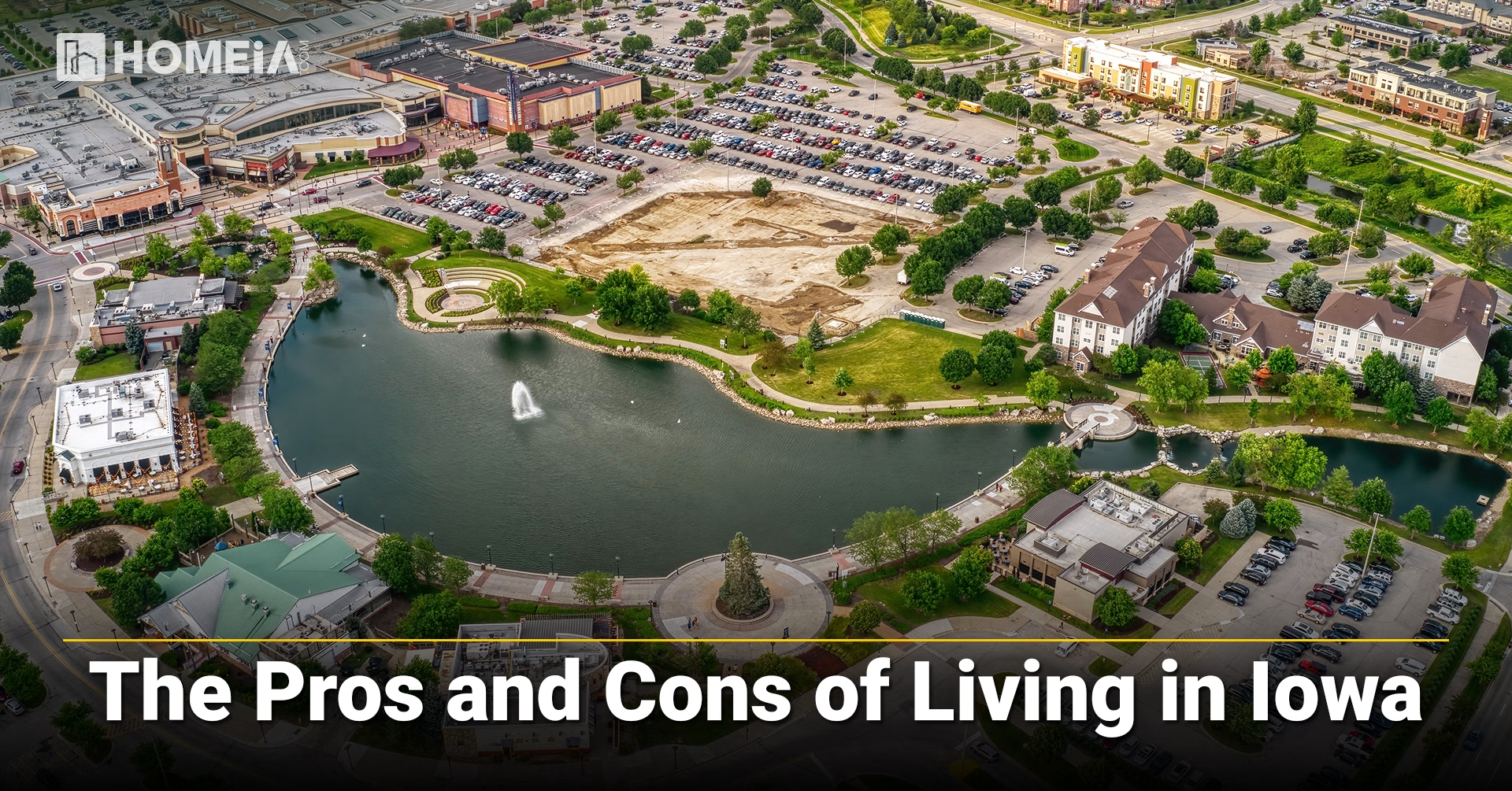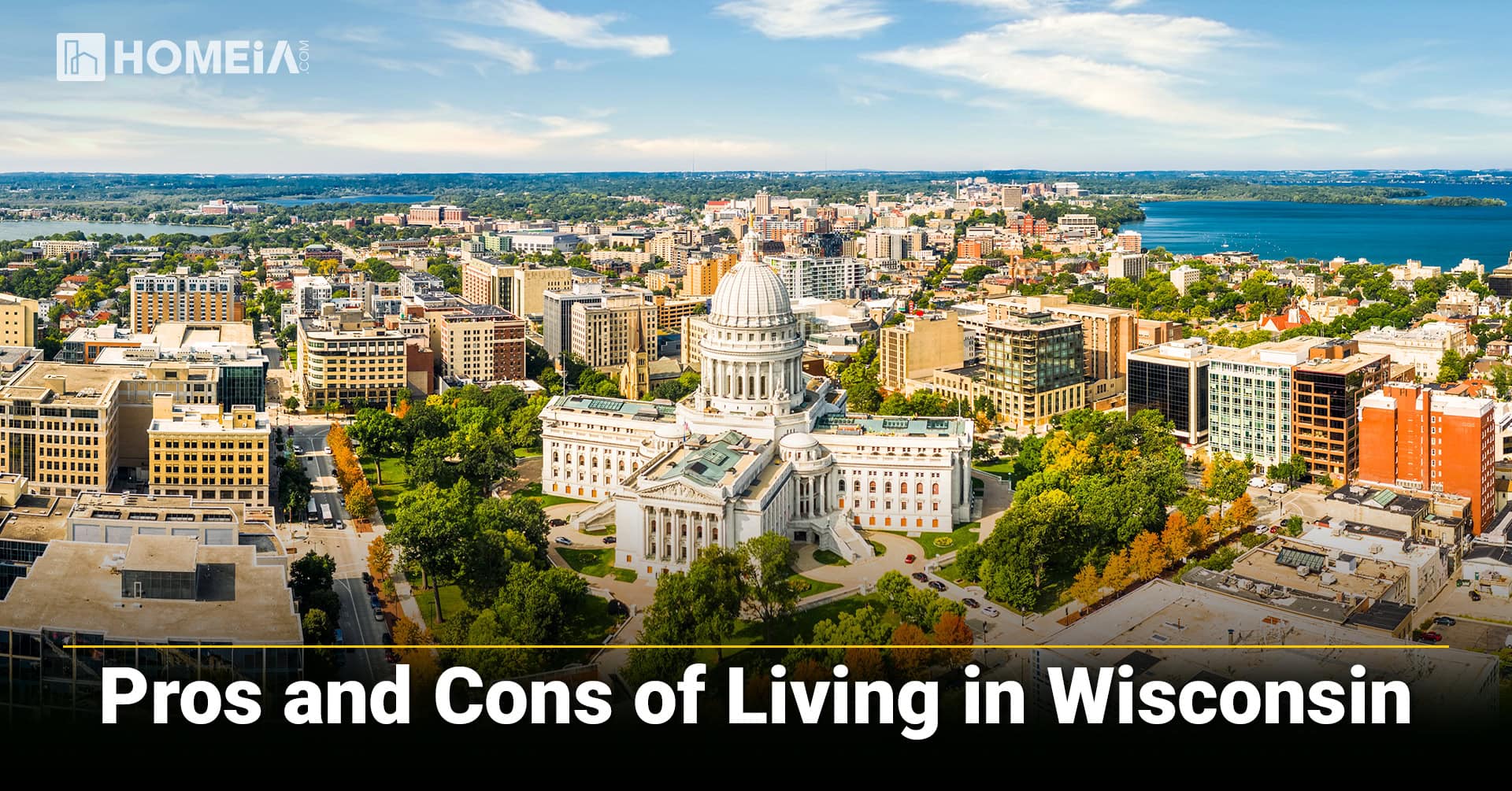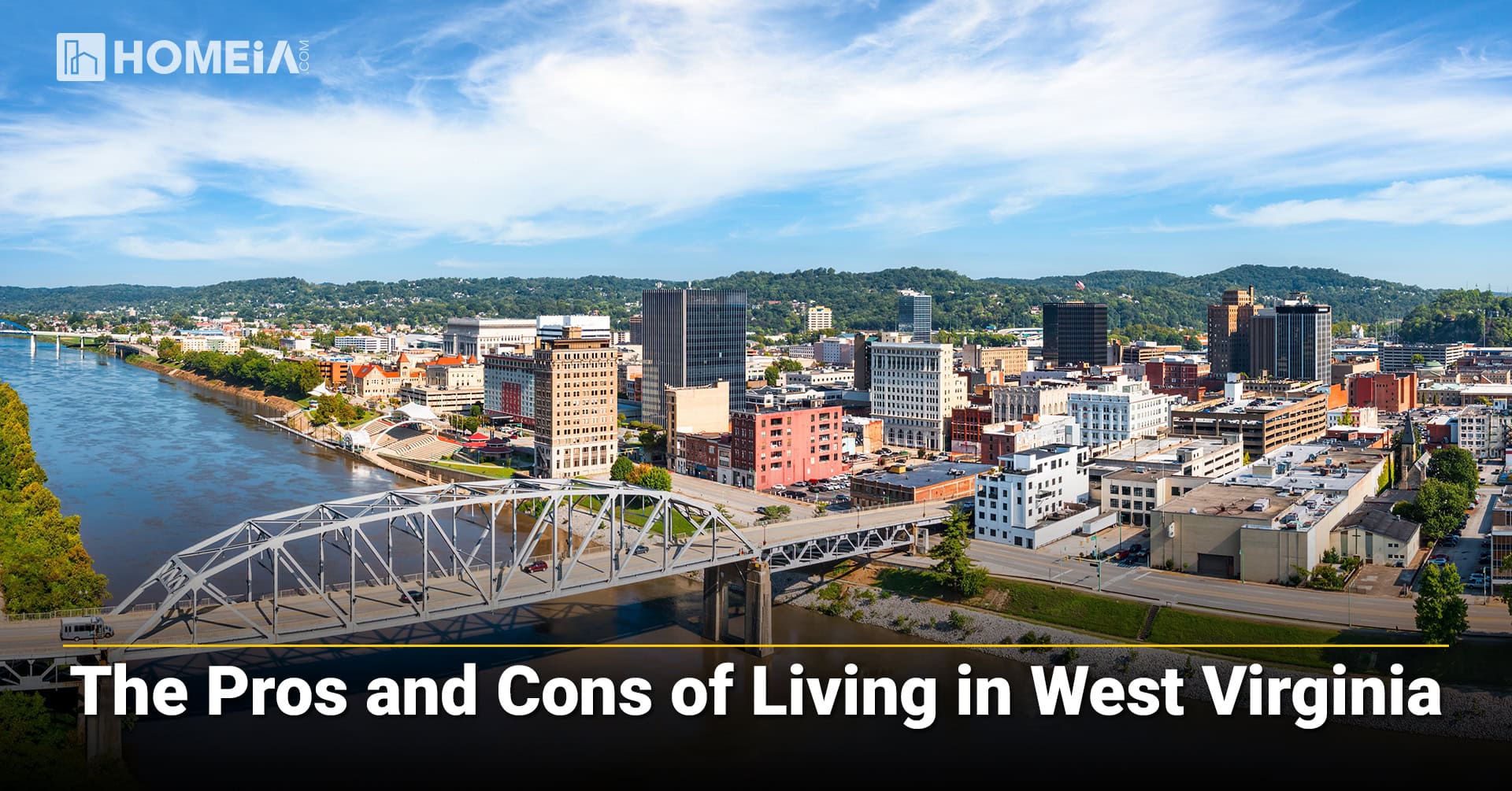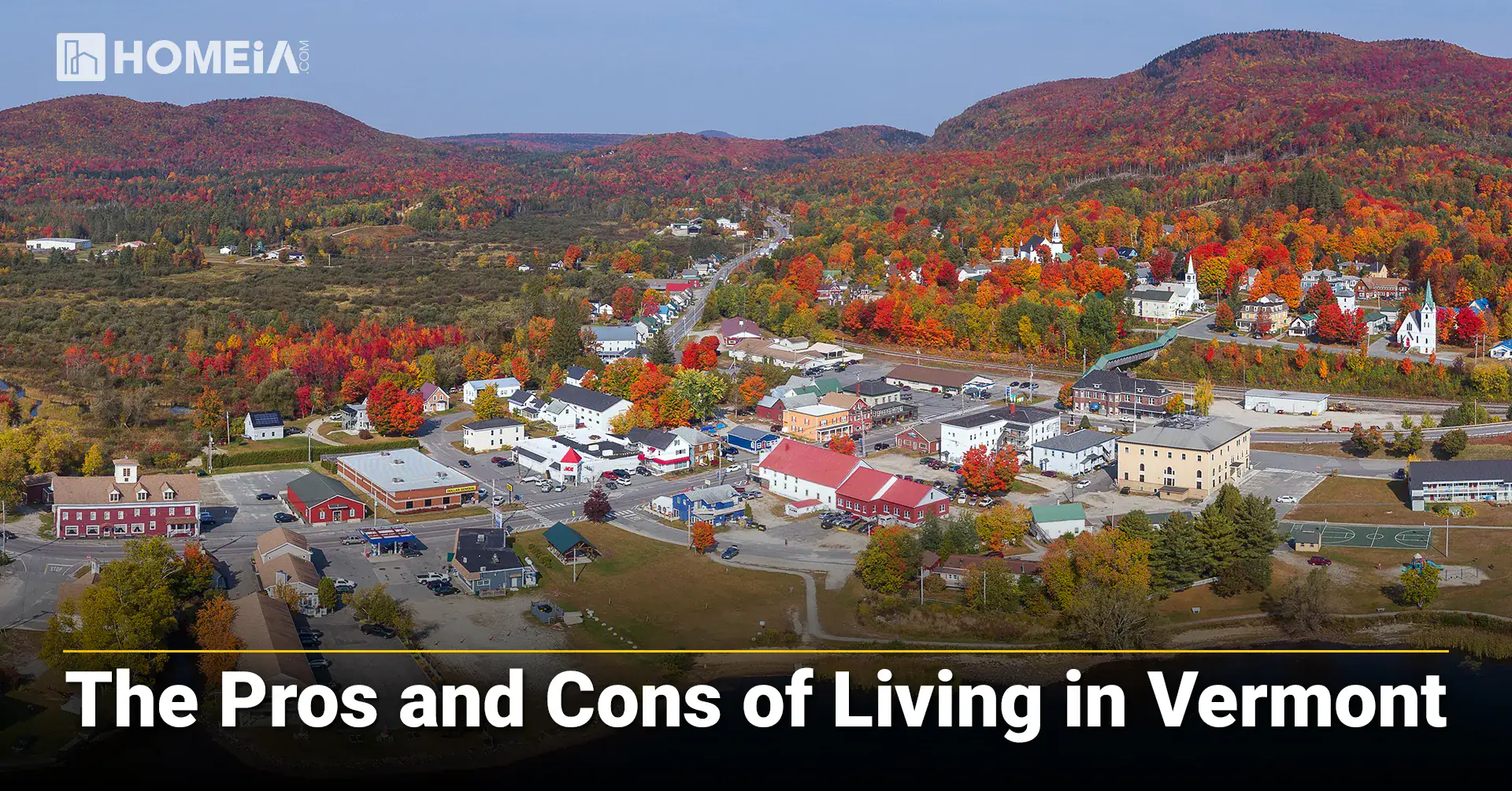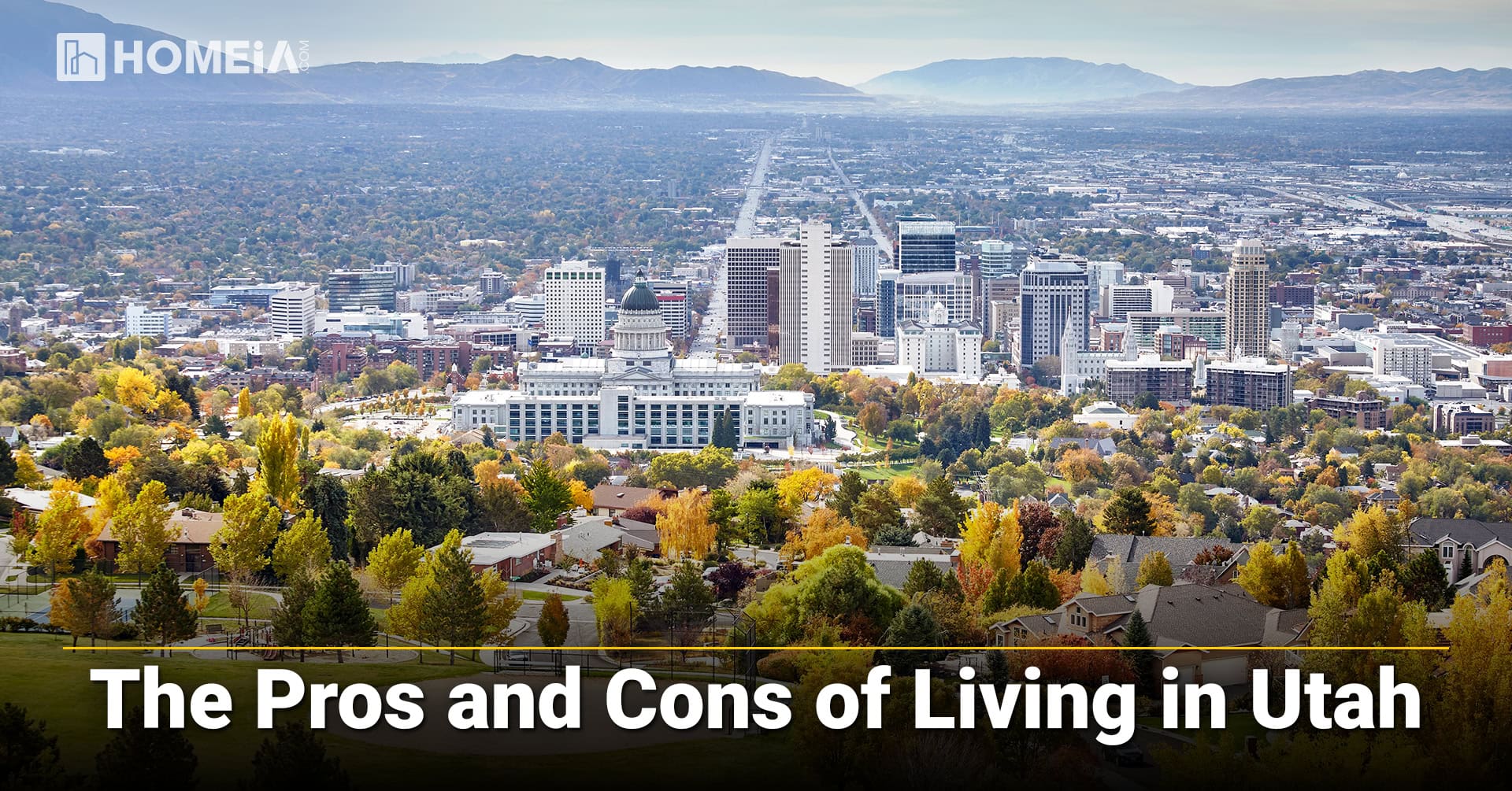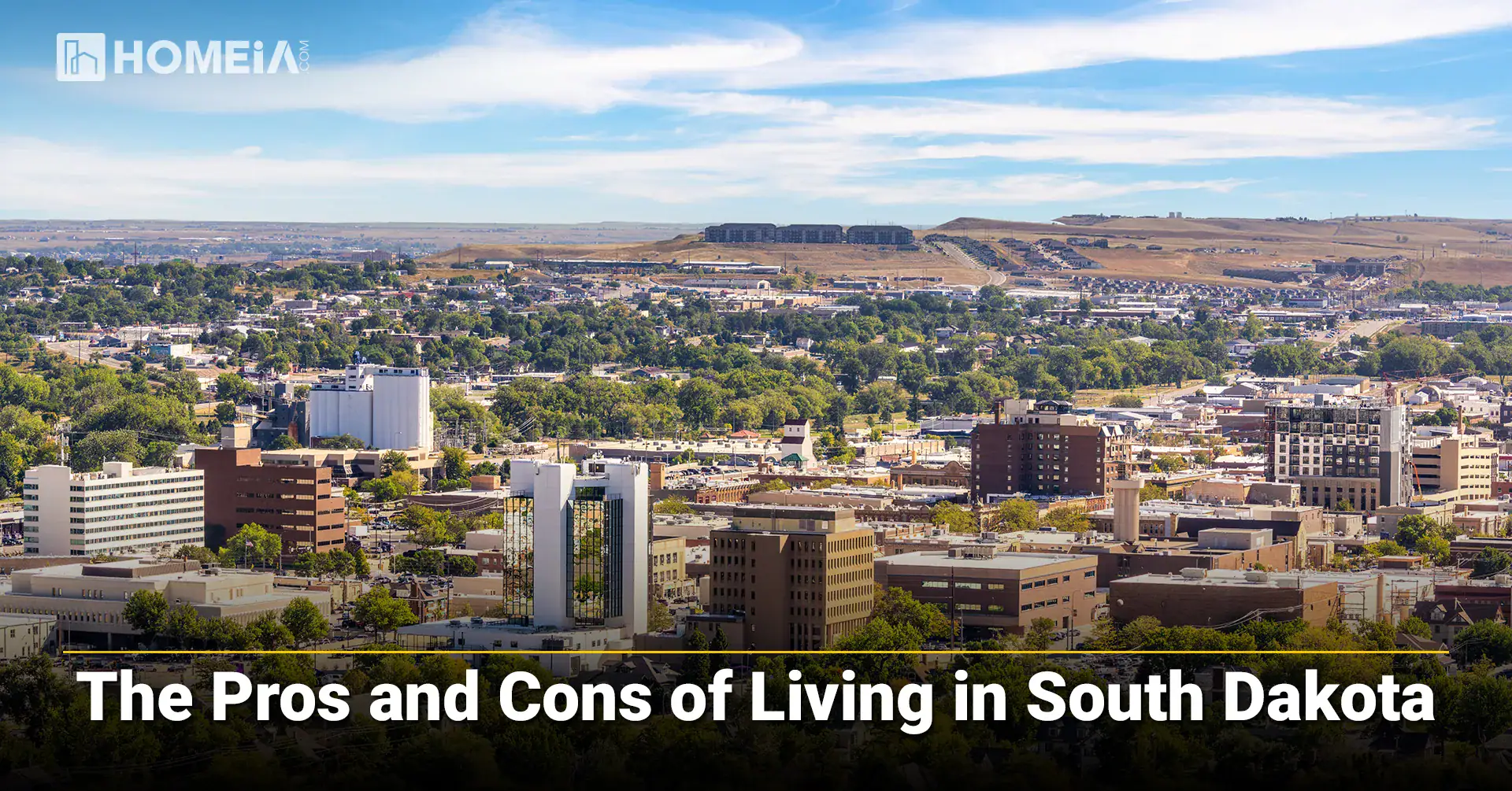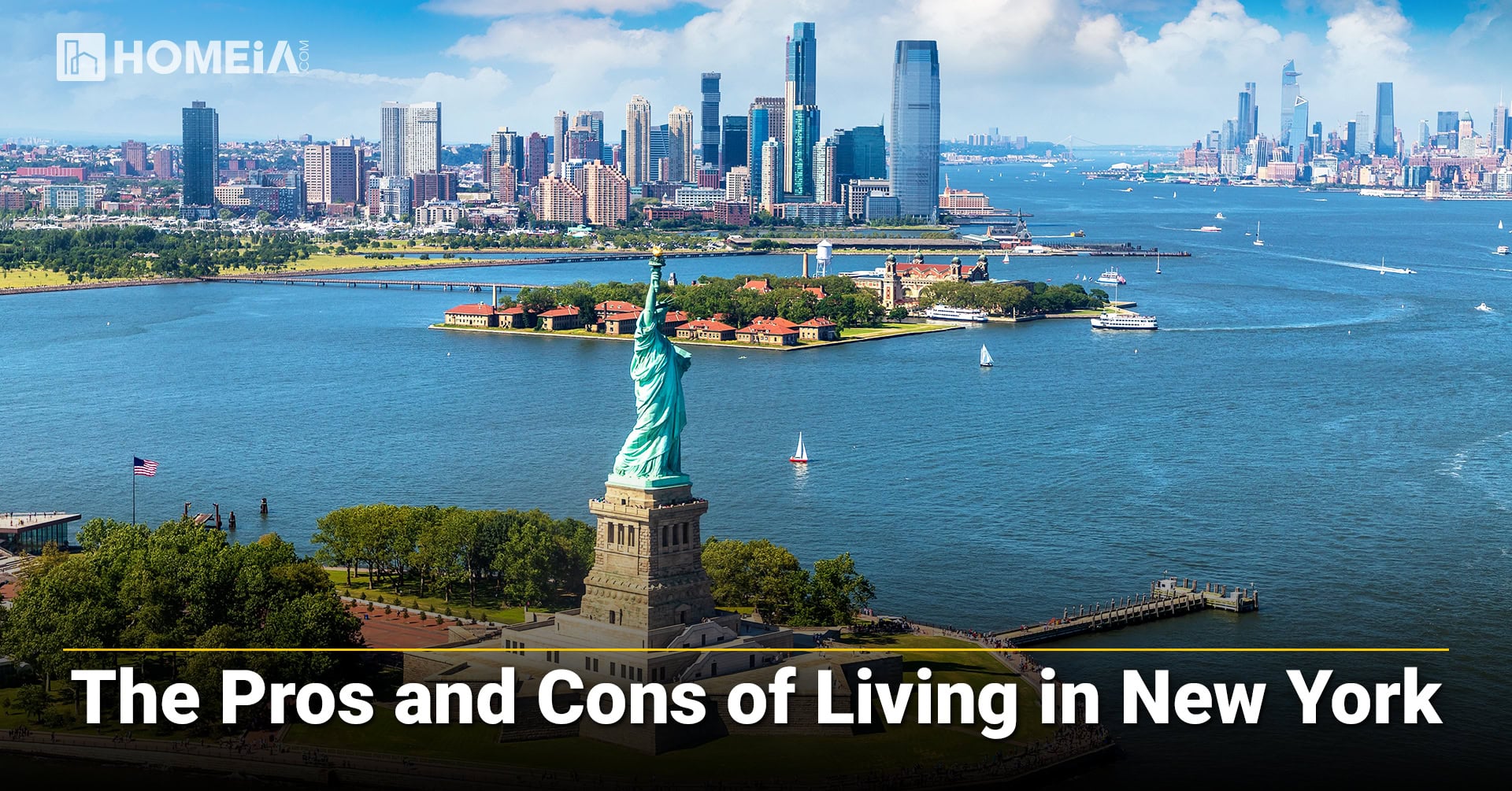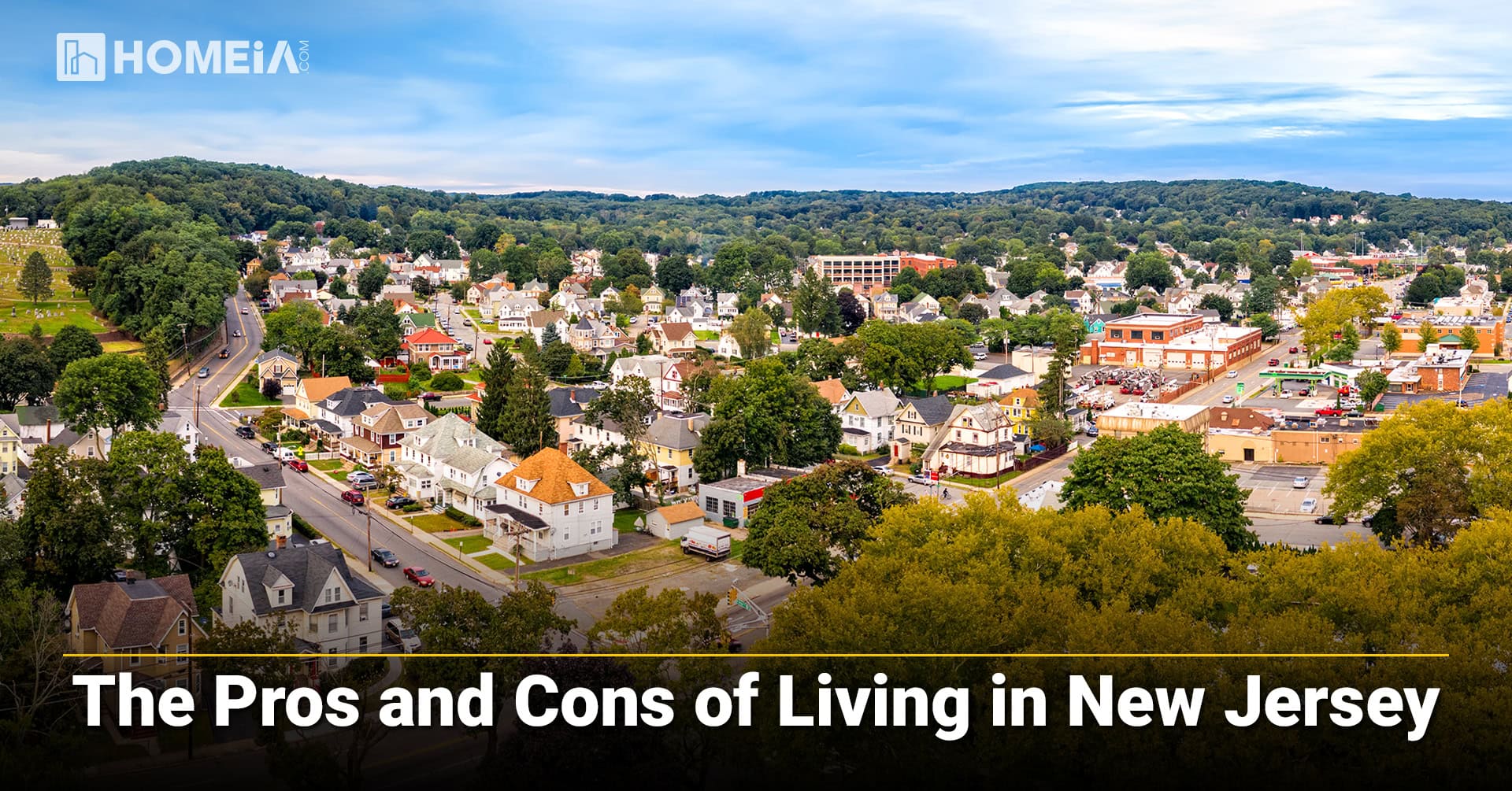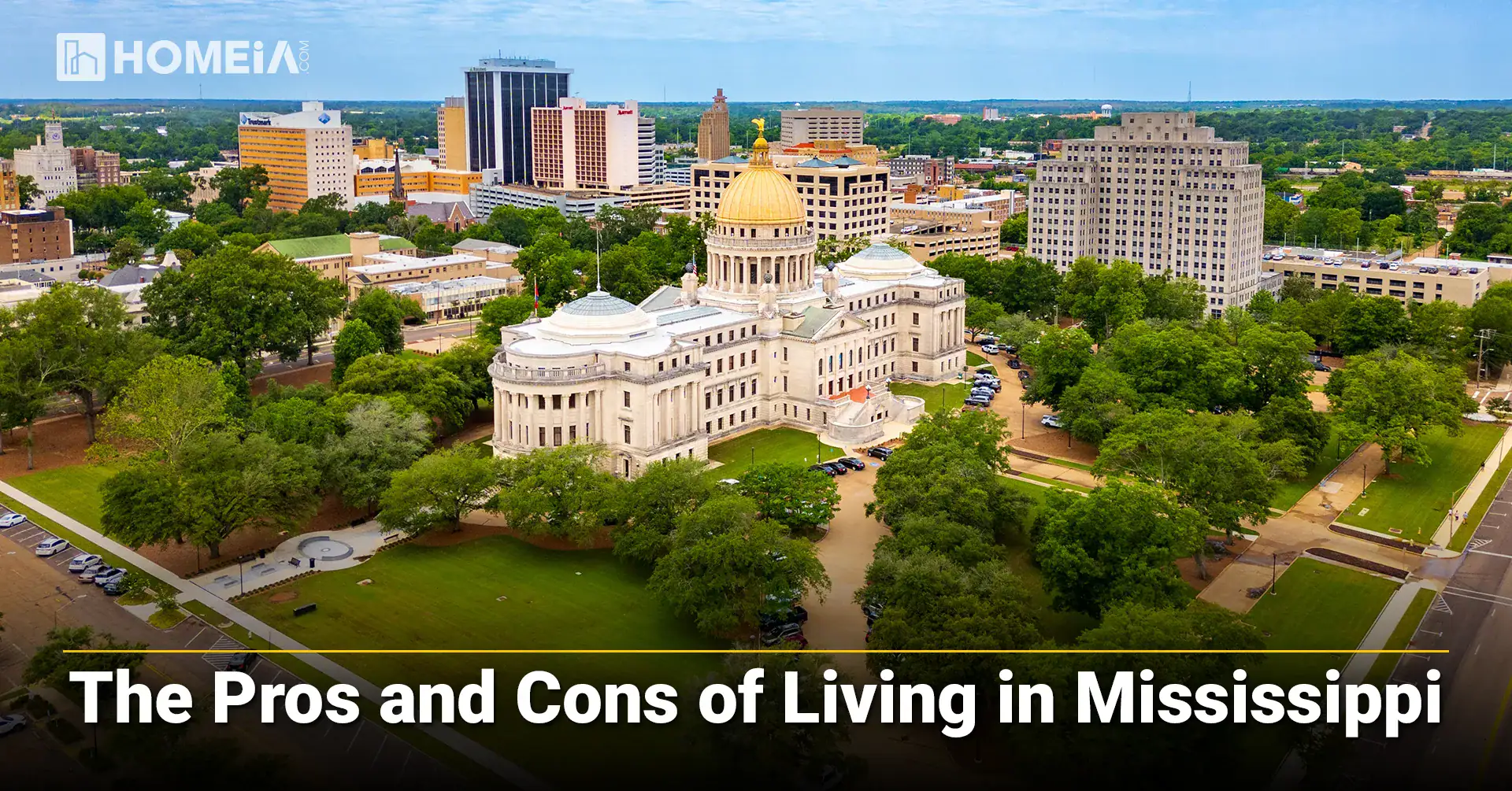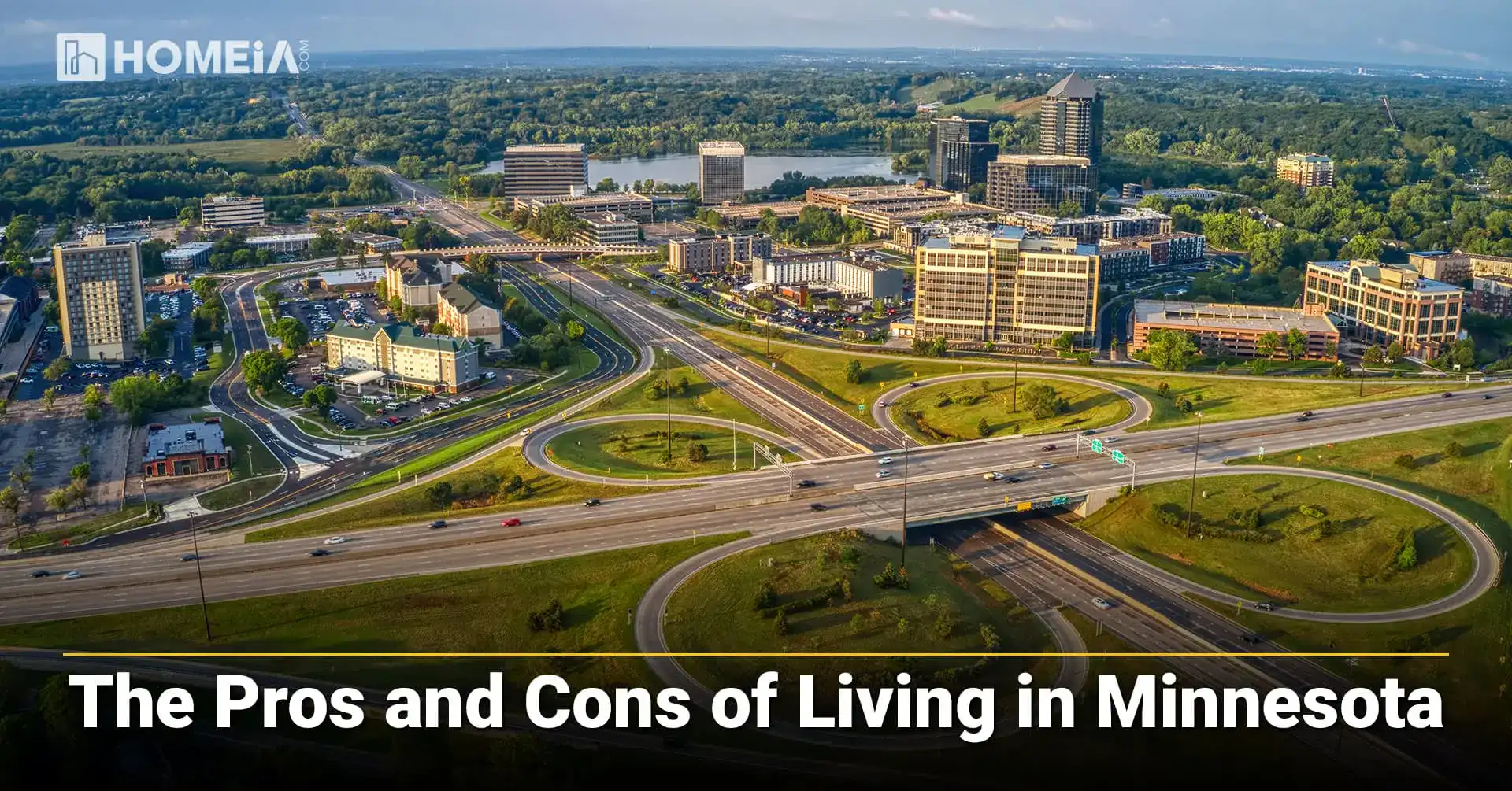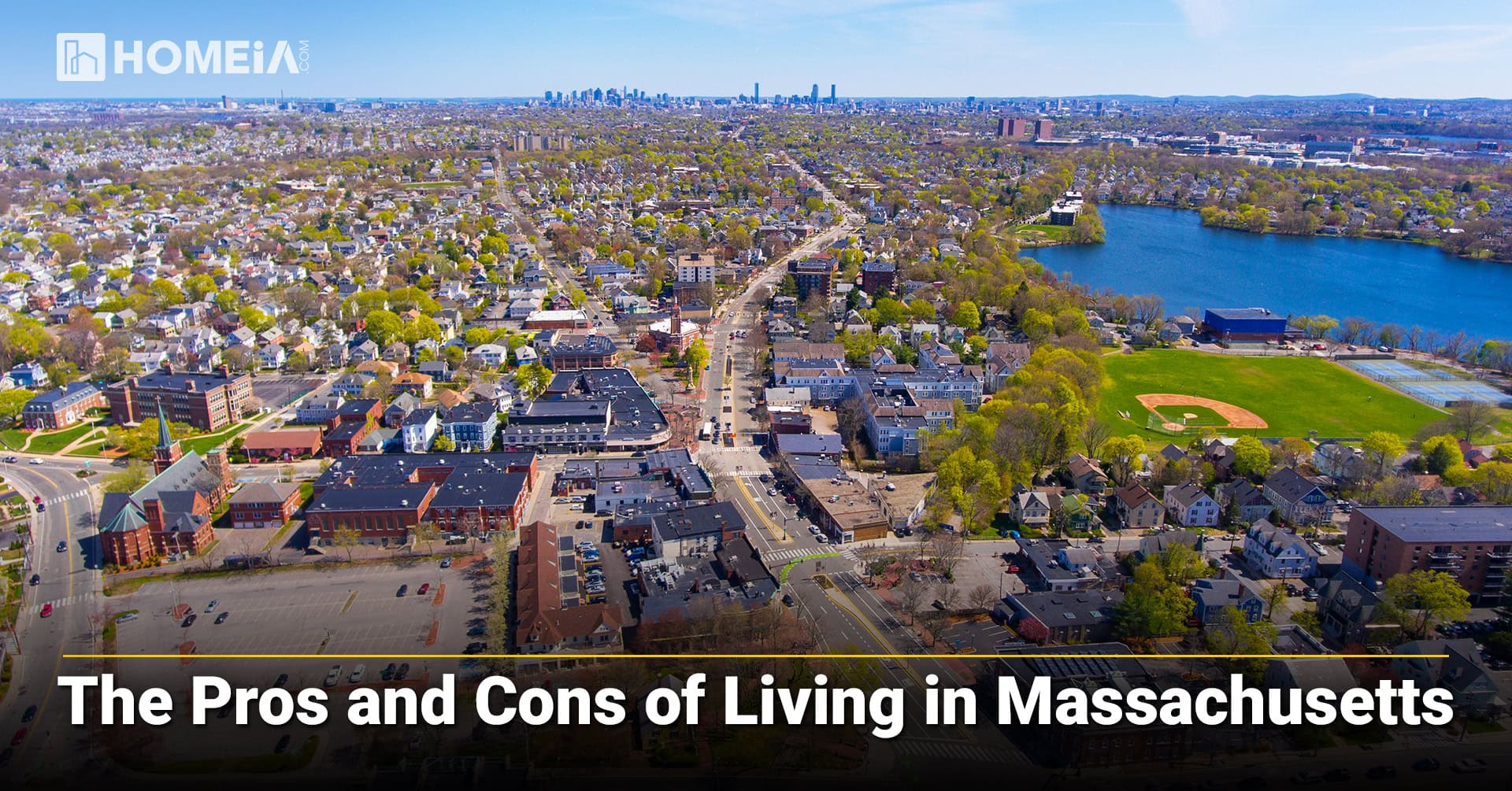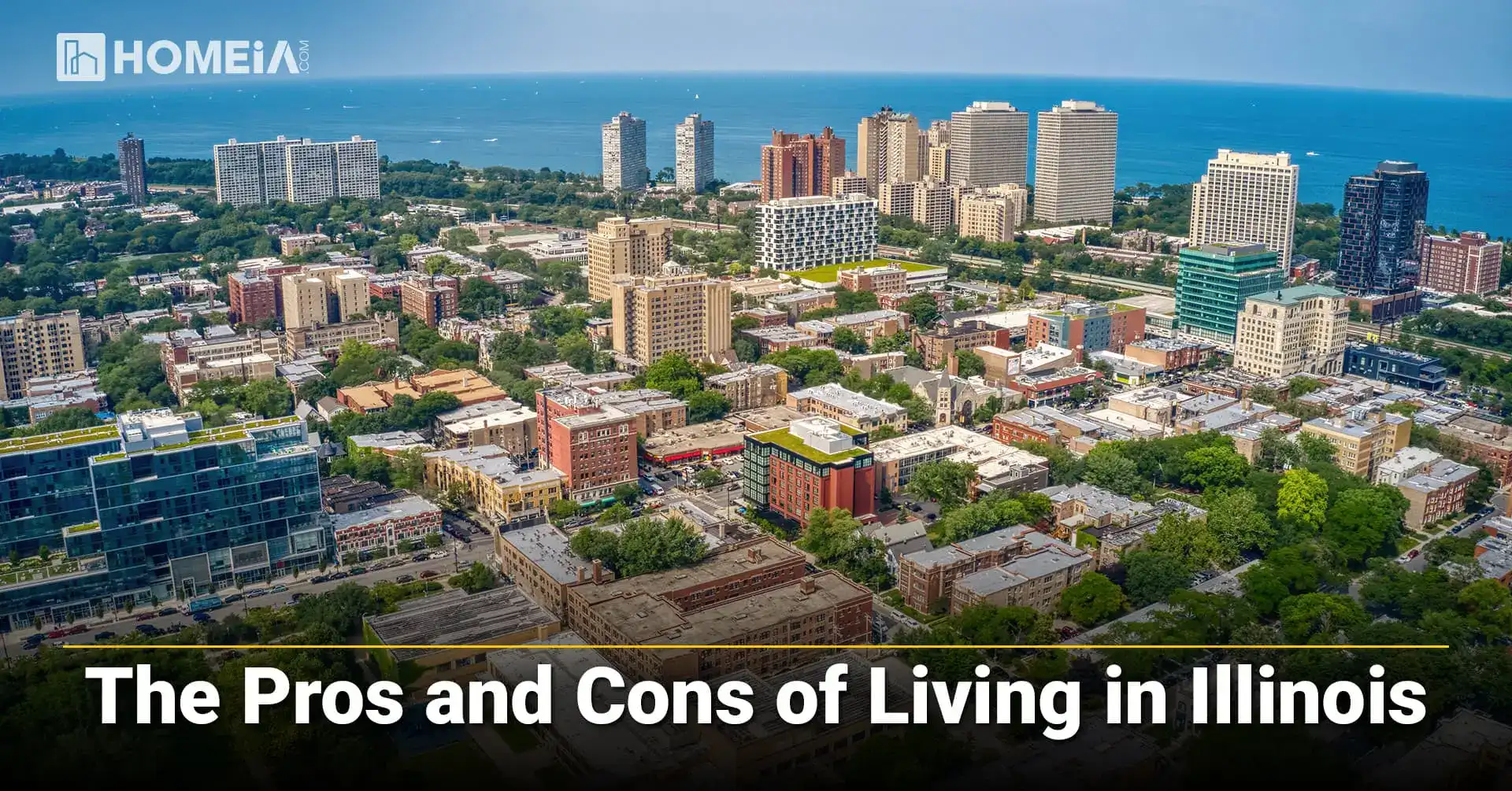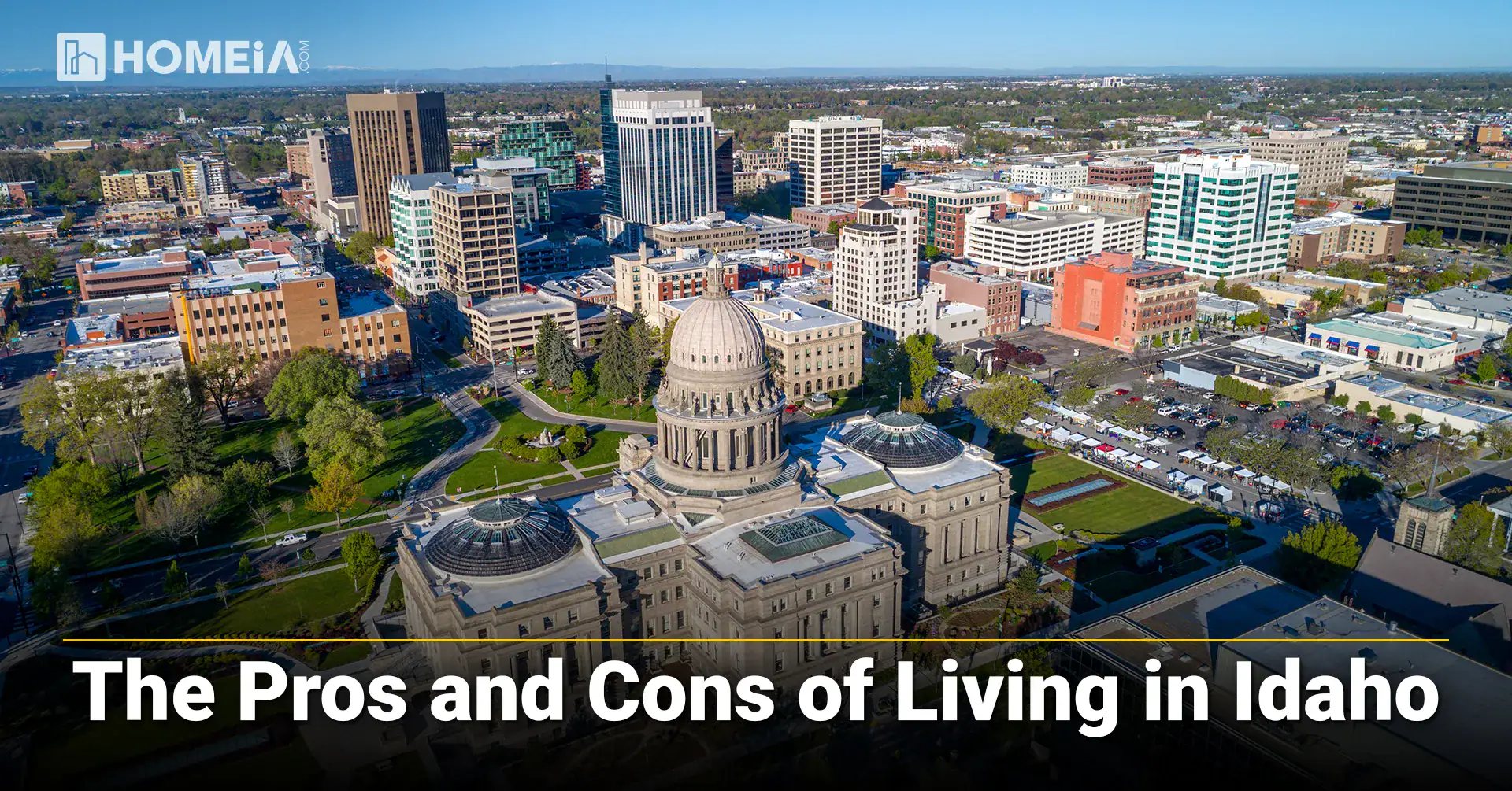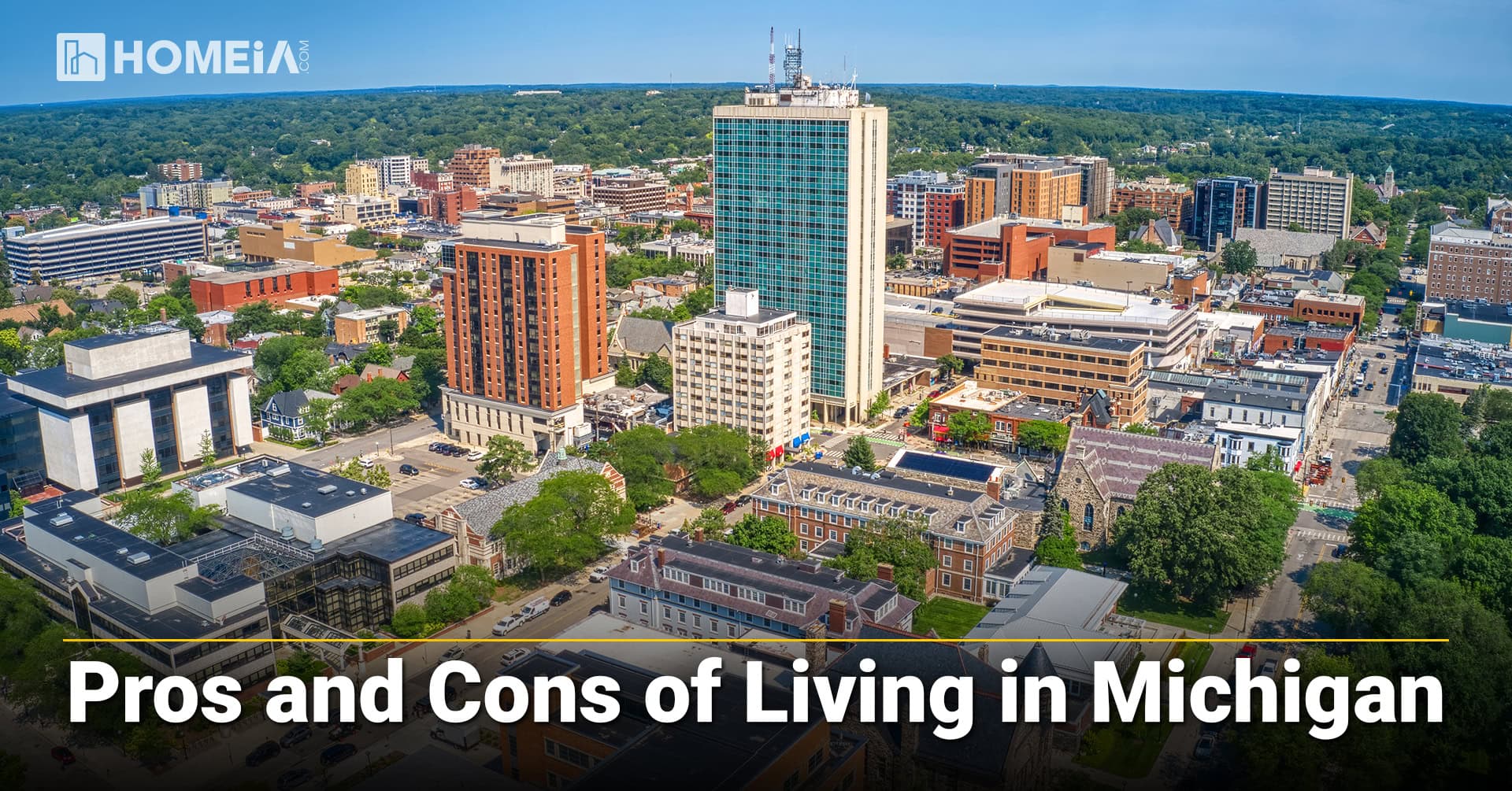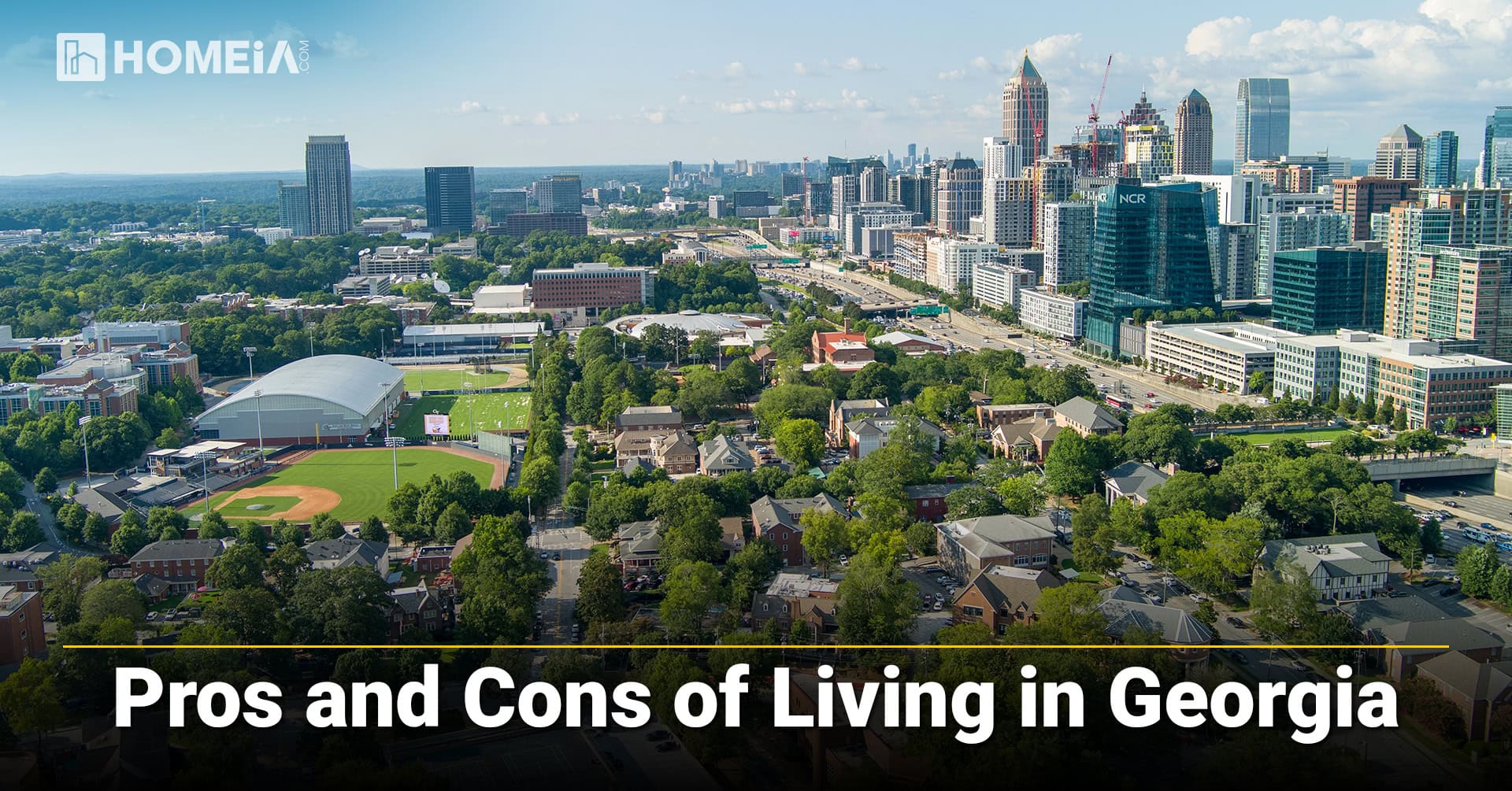Living In Iowa
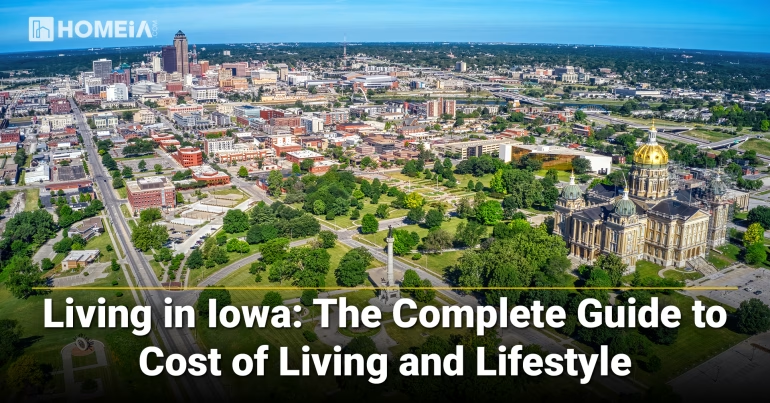
Table of Contents:
- The Complete Guide to Cost of Living and Lifestyle
- Key Takeaways
- I. Methodology: How We Analyzed the Cost of Living
- II. Detailed Community Analysis: Seven Affordable Bayous
- 1. Iowa Housing Costs: Navigating an Affordable Market
- 2. Iowa Tax Structure: A Mixed Picture
- 3. Daily Living Expenses in Iowa
- 4. Family Life in Iowa: Education and Community
- 5. Iowa Transportation: A Car-Dependent State
- 6. Iowa Job Market and Income Potential
- 7. Cost of Living Comparison: Iowa vs. Other States
- 8. Iowa Lifestyle: The Ultimate Trade-Off
- 9. Best Places to Live in Iowa for Different Needs
- Frequently Asked Questions About Living in Iowa
The Complete Guide to Cost of Living and Lifestyle
Iowa living offers a unique value proposition with a low cost of living, strong agricultural economy, and family-friendly communities. The Hawkeye State attracts everyone from young families and professionals to retirees seeking an affordable, stable life. However, trade-offs include variable weather extremes and limited urban amenities in rural areas. This comprehensive guide covers housing prices, taxes, daily expenses, and lifestyle factors to help you decide if Iowa is your next home.
Key Takeaways
- Affordable Housing: Iowa’s housing market is a primary driver of its low cost of living, with median home prices consistently below the national average. However, costs vary significantly between cities including Des Moines and smaller rural communities.
- Favorable Tax Structure: Here offers a tax-friendly environment with a flat income tax rate of 3.8% in 2025, replacing the previous tiered system, and reasonable property taxes, though sales taxes can be high in some areas.
- Moderate Everyday Costs: While housing is economical, other expenses like utilities (due to extreme temperatures), groceries, and healthcare are near or slightly below national averages, impacting the overall budget.
- Lifestyle Trade-Off: Benefits of affordable living, strong communities, and outdoor access are balanced against economic challenges in rural areas and limited cultural amenities outside major cities.
- Community is Key: Strong sense of community and family-friendly environment are intangible benefits that greatly enhance the quality of life for those who embrace the Midwestern way of life.
The Pros and Cons of Living in Iowa
Iowa is more than farmland and rolling hills—it’s a state built on community, affordability, and Midwestern charm. However, challenges like cold winters, fewer entertainment options, and agricultural reliance remain. This guide explores Iowa’s pros and cons, plus its best cities for professionals, families, and retirees seeking balanced Midwest living.
I. Methodology: How We Analyzed the Cost of Living
Our analysis is based on a multi-factor review of key elements that impact residents’ financial well-being and daily life. We compiled data from reputable 2025 sources, including the U.S. Census Bureau, Bureau of Labor Statistics, Zillow housing market reports, Tax Foundation, Missouri Economic Research and Information Center, and local Iowa state agencies.
Our evaluation criteria are weighted as follows:
- Housing & Affordability (30%): The largest budget item. We analyze median home prices, rental costs, and property taxes, using ratios including home-price-to-income to gauge true accessibility.
- Daily Living Expenses (25%): This metric evaluates costs defining a daily budget, including groceries, utilities, transportation, and healthcare, benchmarked against national averages.
- Tax Burden (20%): A crucial component of affordability. We assess the impact of state income, sales, and property taxes on overall financial planning for both workers and retirees.
- Income & Economic Context (15%): Affordability is relative to earnings. We examine median household incomes and economic stability to provide context for the cost data.
- Lifestyle Value (10%): We evaluate the intangible ROI of living in Iowa, considering access to culture, outdoor recreation, and community amenities that offset monetary costs.
II. Detailed Community Analysis: Seven Affordable Bayous

Iowa’s housing market is a beacon of affordability in the Midwest. Expenditures are significantly lower than the national average but vary dramatically between urban centers and rural towns.
A. Major Iowa Cities Housing Costs
City | Median Home Price | Avg. Rent (2-Bedroom) | Home Price to Income Ratio | Income to Rent Ratio | Safety Rating |
|---|---|---|---|---|---|
| Waterloo | ~$145,000 | $750 – $900 | 2.3:1 | 46.9x | 65/100 |
| Sioux City | ~$165,000 | $800 – $950 | 2.5:1 | 44.7x | 70/100 |
| Davenport | ~$185,000 | $850 – $1,000 | 2.7:1 | 43.8x | 68/100 |
| Cedar Rapids | ~$215,000 | $950 – $1,100 | 2.9:1 | 41.5x | 75/100 |
| Des Moines | ~$245,000 | $1,100 – $1,300 | 3.2:1 | 38.2x | 72/100 |
| Ames | ~$265,000 | $1,100 – $1,300 | 3.4:1 | 36.8x | 80/100 |
| Iowa City | ~$280,000 | $1,200 – $1,400 | 3.6:1 | 35.1x | 78/100 |
B. Iowa Housing Strategies and Financial Options
Financing a home is straightforward, with widely accepted FHA, VA, and conventional loans. However, first-time homebuyers should pay special attention to energy efficiency. Older homes can be costly to heat in the winter, while poorly insulated homes may incur higher cooling costs in summer. A thorough inspection is critical. For rural properties, well and septic system inspections are essential.
Moving to Iowa: The Complete Relocation Guide & Checklist
Bordered by six states, Iowa combines rolling plains, vibrant cities, and a strong sense of community. Home to 3.2 million people, it offers affordable living, great schools, and steady employment. This guide provides key relocation insights, from costs and climate to the benefits of settling in the welcoming Hawkeye State.
2. Iowa Tax Structure: A Mixed Picture

A. Iowa State Taxes Overview
IA’s tax structure is currently a flat income tax rate of 3.8% for 2025, planned to adjust to 3.9% in 2026, making it more competitive with neighboring states. Property taxes are moderate, averaging around 1.50%, and sales tax rates vary by county, typically ranging from 6-7%. The Hawkeye State does tax Social Security income but offers exemptions for lower-income retirees.
B. Tax Comparison: Iowa vs. Other States
Tax Type | Iowa (2025) | Illinois | Minnesota | Missouri | National Avg. |
|---|---|---|---|---|---|
| State Income Tax | 3.8% Flat | 4.95% Flat | 5.35%-9.85% | 1.5%-5.3% | ~5.1% |
| State Sales Tax | 6% + local | 6.25% | 6.875% | 4.225% | ~6.35% |
| Avg. Combined Sales Tax | ~6.82% | ~8.81% | ~7.46% | ~8.29% | ~7.12% |
| Avg. Property Tax | 1.50% | 2.08% | 1.12% | 0.97% | 1.07% |
| Social Security Taxed? | Yes | No | Yes | Yes | N/A |
3. Daily Living Expenses in Iowa
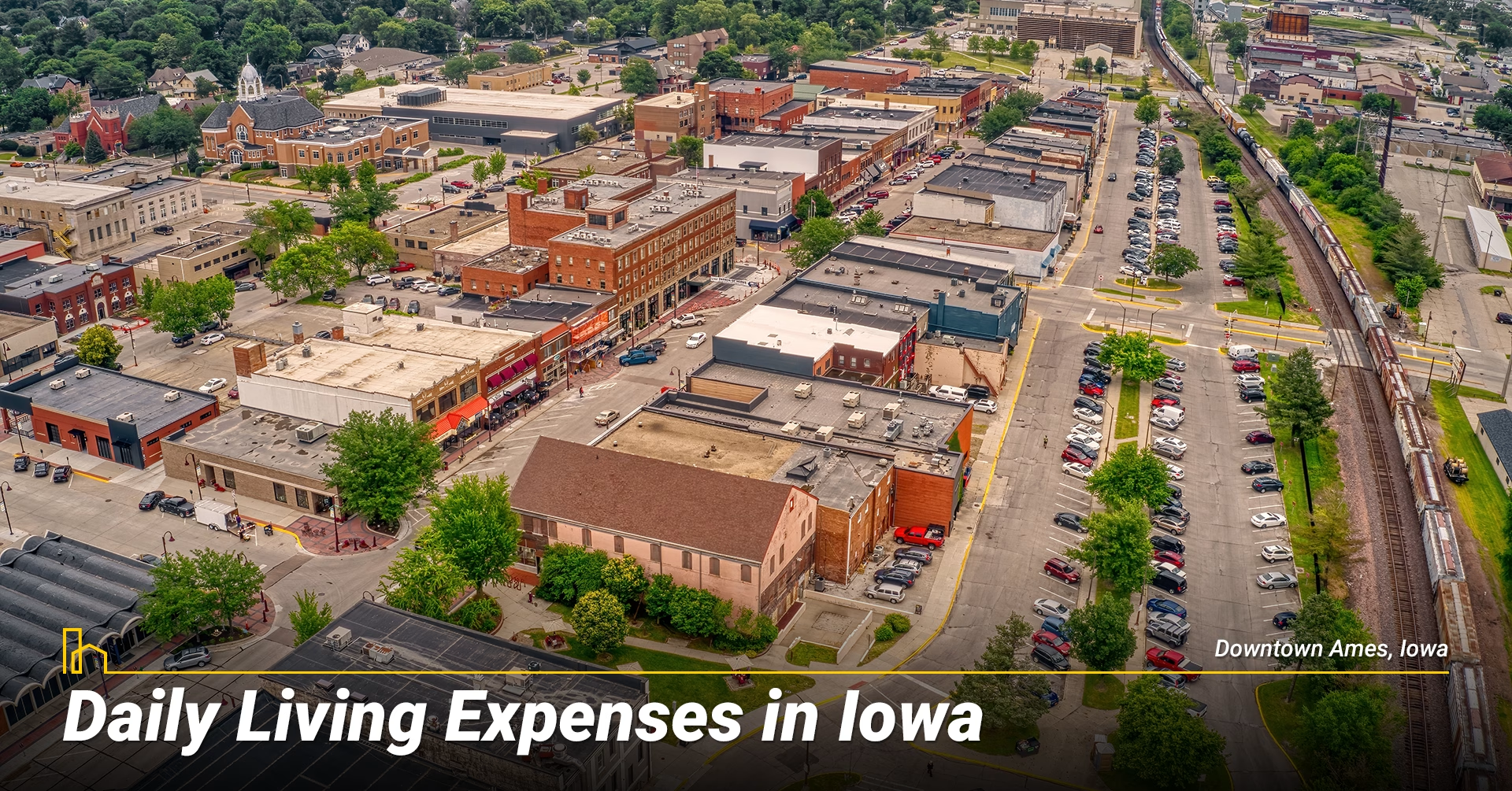
Overall cost of living is approximately 10-13% below the national average, but daily expenses tell a nuanced story.
A. Monthly Living Costs Breakdown
Expense Category | Iowa Cost | National Comparison |
|---|---|---|
| Groceries (per person) | $280-$330/month | 3-6% below average |
| Utilities (Monthly Avg.) | $150-$250/month | Near or slightly below average (seasonal variance) |
| Gasoline | ~$3.10/gallon | Slightly below average |
| Healthcare (individual) | $400-$500/month | Near national average |
| Internet | $65-$90/month | Near national average |
B. Cost-Saving Strategies for Iowa Living
Smart Iowans mitigate costs by:
- Shopping Sales & Buying in Bulk: Hy-Vee and Fareway are staples. Stocking up during sales is common.
- Eating Local: Purchasing fresh produce at farmers’ markets and buying directly from local farms.
- Energy Efficiency: Investing in proper insulation and energy-efficient windows to protect against extreme temperatures.
- Utilizing the Outdoors: Low-cost recreation from hiking, biking, and community events replaces expensive entertainment.
Recommended for you
4. Family Life in Iowa: Education and Community

IA offers a unique family life with strong community bonds and exceptional educational opportunities.
A. Education in Iowa
Education quality is consistently high across the state. It often ranks among the top states for education nationally, with ideal public school systems and numerous private options. Here offers overachieving community colleges and universities, including the University of Iowa and Iowa State University.
B. Childcare and Family Costs
Family Expense | Iowa Cost | Available Support |
|---|---|---|
| Childcare (Monthly) | $650-$850/month | State assistance programs available |
| Youth Sports | $80-$250/season | Community leagues are affordable and popular |
| 4-H & Outdoor Programs | Varies | Very accessible and big part of rural culture |
5. Iowa Transportation: A Car-Dependent State
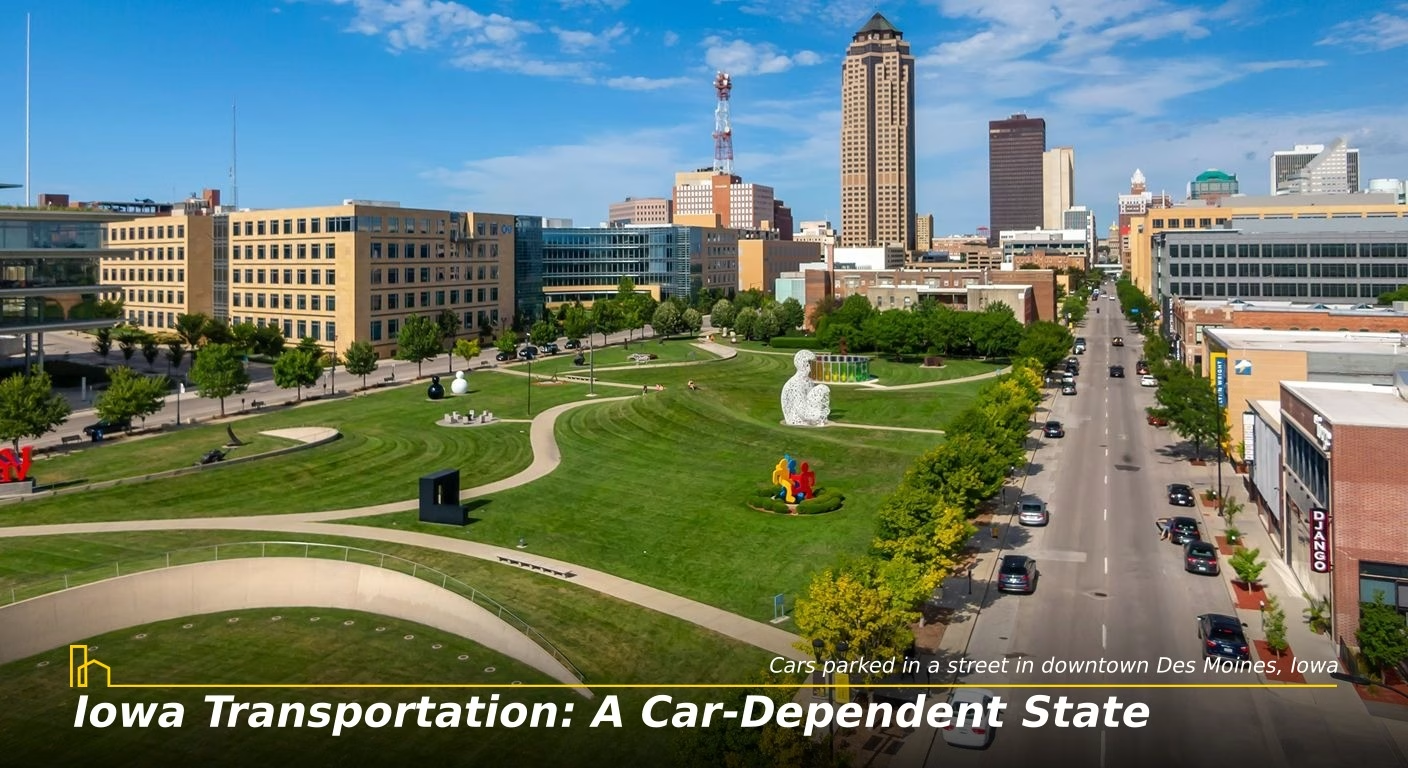
Transportation is a necessary budget line item.
A. Vehicle-Related Expenses
Transportation Cost | Iowa Average | National Comparison |
|---|---|---|
| Auto Insurance | $1,200-$1,600/year | Slightly below average |
| Gas Prices | ~$3.10/gallon | Below average |
| Vehicle Registration | $60-$110/year | Based on vehicle weight and model year |
| Annual Mileage | ~15,000 miles | Above average due to distances between cities |
B. Public Transit and Air Travel
- Des Moines: Has the state’s most comprehensive bus system (DART).
- Other Cities: Offer limited or no public transit.
- Air Travel: Essential for travel. Des Moines International (DSM) is the major hub.
The 5 Best Places to Live in Iowa: A City Comparison
Iowa blends small-town warmth with modern opportunity, offering both agricultural roots and urban sophistication. This guide highlights the five best Iowa cities to live in 2025, based on affordability, opportunity, safety, and quality of life—from bustling Des Moines to scholarly Iowa City—helping you find your perfect Midwestern home.
6. Iowa Job Market and Income Potential
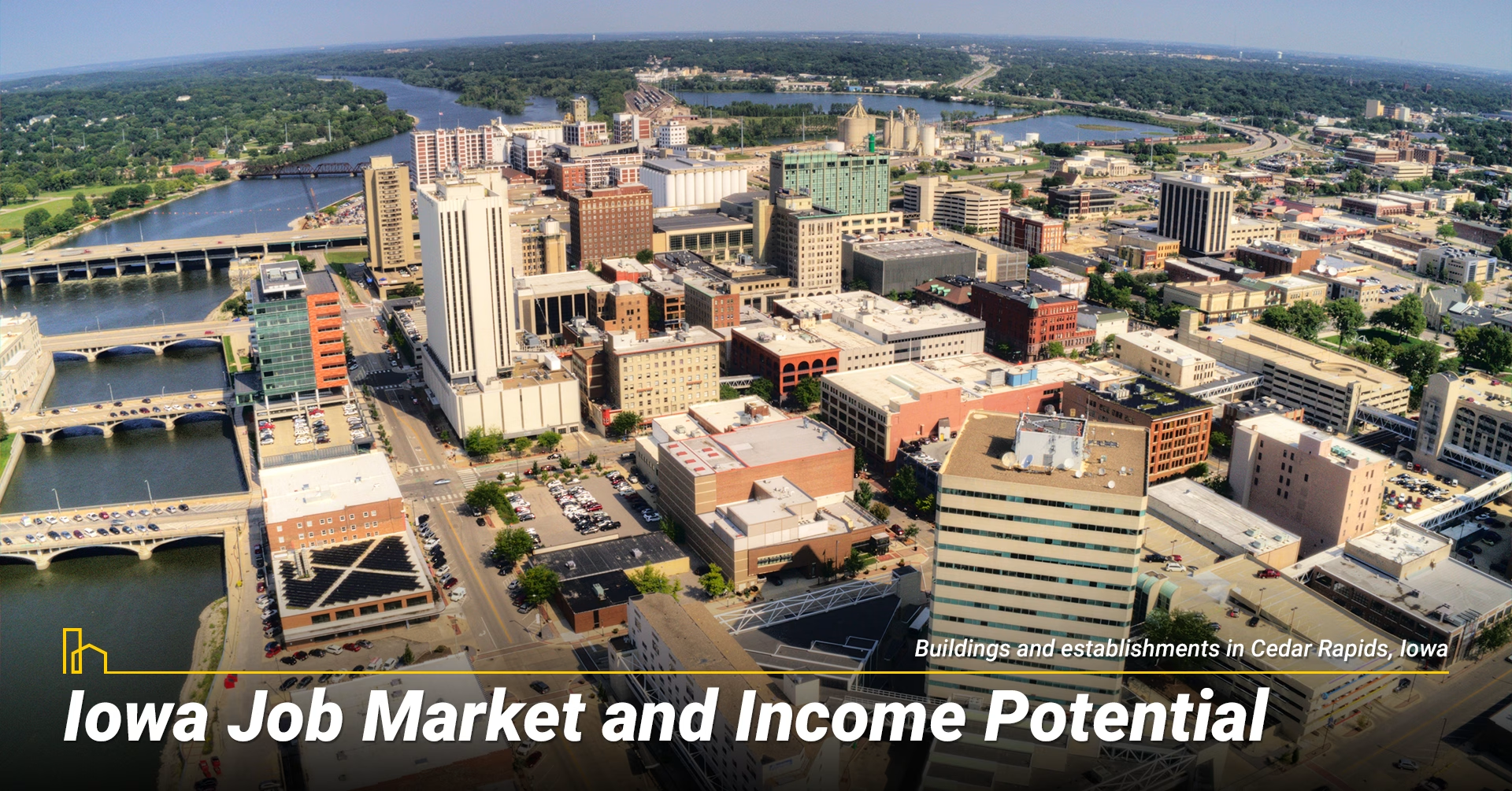
A diverse economy,, with strong agricultural, manufacturing, and insurance sectors.
A. Income Statistics and Employment
Income Metric | Iowa | National Average |
|---|---|---|
| Minimum Wage | $7.25/hour | $7.25/hour |
| Median Household Income | $68,000 (2025) | ~$75,000 |
| Unemployment Rate | ~3.2% | ~3.9% |
B. Major Iowa Employers and Industries
Industry | Key Companies/Employers | Typical Salary Range |
|---|---|---|
| Insurance | Principal Financial, Nationwide | $50,000 – $120,000/year |
| Agriculture | John Deere, Cargill | $45,000 – $100,000/year |
| Manufacturing | Rockwell Collins, Vermeer | $40,000 – $85,000/year |
| Education | University of Iowa, Iowa State University | $40,000 – $80,000/year |
| Healthcare | UnityPoint, MercyOne | $50,000 – $110,000/year |
7. Cost of Living Comparison: Iowa vs. Other States
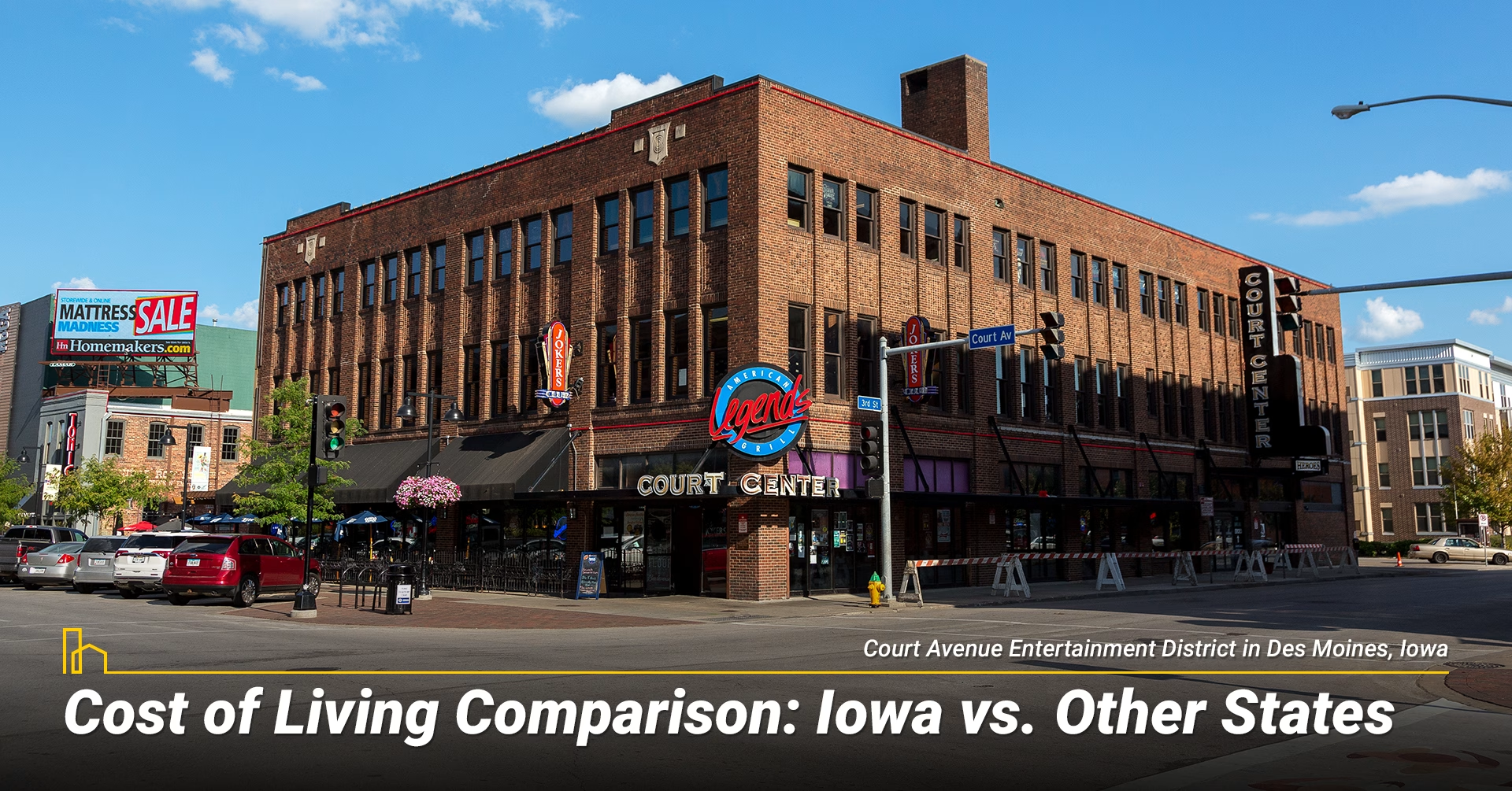
Expense Category | Iowa | Illinois | Minnesota | Missouri |
|---|---|---|---|---|
| Median Home Price | $215,000 | $255,000 | $335,000 | $240,000 |
| Rent (2-Bedroom) | $1,000 | $1,300 | $1,400 | $950 |
| Gas Price/Gallon | $3.10 | $3.70 | $3.40 | $3.15 |
| Utilities (Monthly) | $200 | $180 | $190 | $175 |
Moving to Minnesota? This complete guide has everything you need — cost of living, job market insights, top places to live, and settling-in tips. Whether you’re drawn to the Twin Cities, St. Cloud, Rochester, a charming small town, or the scenic North Shore, we’ll help you make a confident, informed move…Moving to Minnesota: THE Complete Relocation Guide and Checklist
8. Iowa Lifestyle: The Ultimate Trade-Off

The Iowan lifestyle combines low costs with high quality of life: close-knit communities, overachieving schools, and abundant outdoor recreation. Benefits are balanced against harsh winters, limited cultural amenities in rural areas, and geographic isolation from major metropolitan centers.
A. Lifestyle Advantages of Iowa Living
Ability to raise a family in safe communities, enjoy outdoor activities, and access quality education on a modest budget is unparalleled. A sense of community and connection to nature provides a quality of life that is difficult to quantify but deeply felt by residents.
B. Iowa Living Challenges
Unforgiving winters with extreme cold and snow can be challenging. Access to specialized healthcare, certain consumer goods, and cultural events can be limited in rural areas and require travel to Des Moines or out of state.
9. Best Places to Live in Iowa for Different Needs
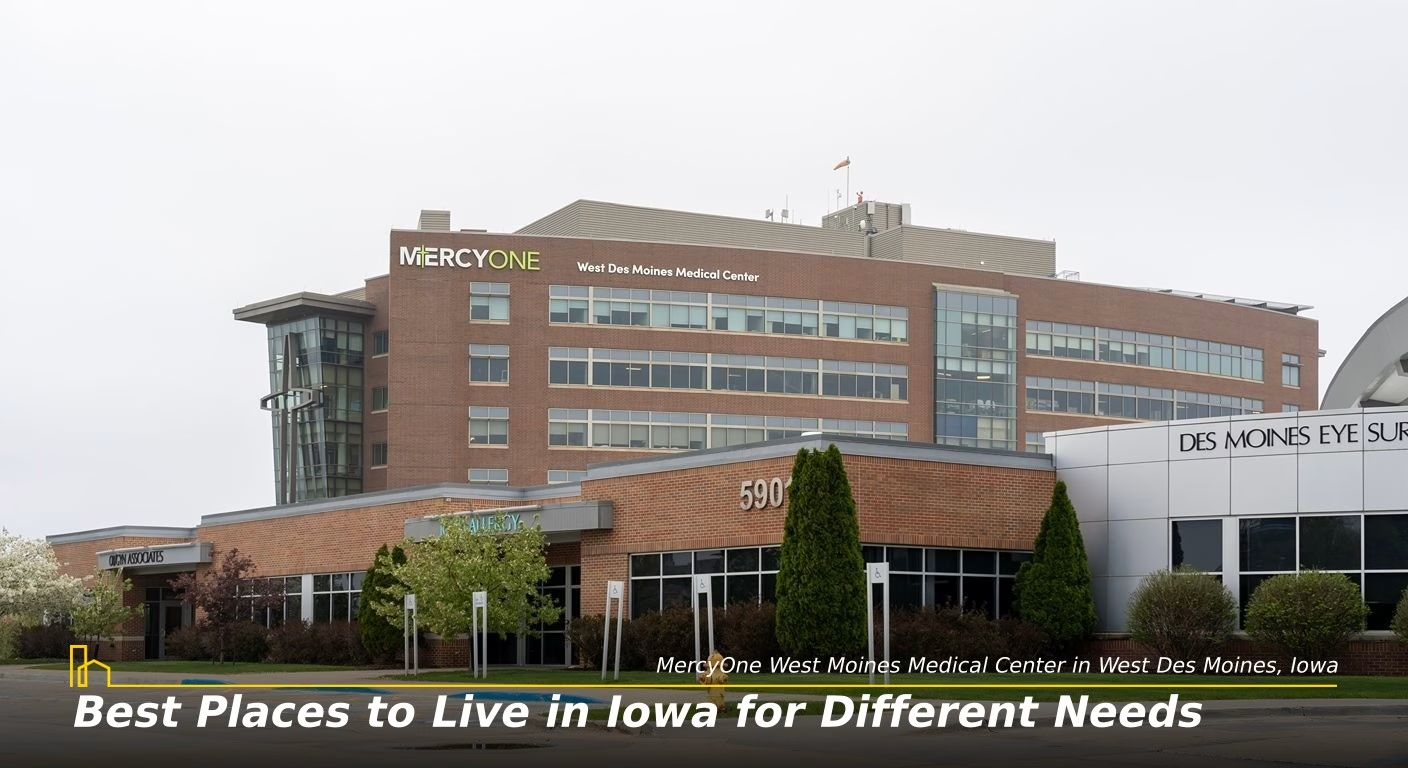
A. Family-Friendly Iowa Communities
Community Type | Best Cities | Median Home Price | Key Benefits |
|---|---|---|---|
| Urban Family | West Des Moines | $315,000 | Top schools, amenities, near DSM jobs |
| Affordable Family | Cedar Rapids | $215,000 | Good schools, low costs, stable economy |
| Rural Family | Iowa City | $280,000 | #1 schools, university town, cultural amenities |
B. Professional and Retiree Options
- Des Moines provides the most diverse corporate and insurance job opportunities.
- Iowa City offers a stable, education-focused economy for professionals and retirees.
- Cedar Rapids is a hub for manufacturing and aerospace with a low cost of living.
- Ames and Iowa City are premier college towns offering cultural amenities and educational opportunities for retirees.
Conclusion: Making Iowa Living Work for You
Success depends on choosing the right location for your budget and career, preparing for the climate, and embracing a community-oriented mindset. While the cost of living is low, strategic financial planning—and a willingness to engage with the local culture—is vital. For those drawn by stability, family-friendliness, and financial ease, IA offers a rewarding lifestyle unlike any other. For a comparison with another Midwestern state, explore our guide on the most affordable places to live in Ohio.
Recommended for you
Frequently Asked Questions About Living in Iowa
1. What is a comfortable salary to live in Iowa?
Someone single can live comfortably on an annual salary of $45,000-$55,000. Larger families (of 4) typically need a combined income of $75,000+ to cover housing, groceries, utilities, and transportation confidently, especially in more expensive cities like West Des Moines.
2. Is Iowa a tax-friendly state for retirees?
Mixed. Iowa is becoming more tax-friendly for retirees with the transition to a flat income tax. However, it does tax Social Security income, though exemptions exist for lower-income retirees. Property taxes are low, making it reasonable for retirees on fixed incomes.
3. How do people afford groceries in Iowa?
Residents afford groceries during sales at major chains like Hy-Vee and Fareway, buying in bulk at Costco, and subscribing to local CSA programs for fresh produce. Many also take advantage of the state’s agricultural abundance by purchasing directly from farms.
4. Is healthcare more expensive in Iowa?
Healthcare costs are near or slightly below the national average. Major hubs including Des Moines and Iowa City have excellent medical facilities (e.g., University of Iowa Hospitals), but specialized care in rural areas can be limited and require travel.
5. What are the biggest hidden costs?
Hidden costs to watch out for are utilities (high heating bills due to cold winters), vehicle maintenance (road salt damage and winter driving conditions), and transportation costs (long drives for specialized goods or entertainment in rural areas).
6. Is Iowa a good place to retire?
It can be an exceptional place to retire for the right person. The low cost of living, safe communities, and quality healthcare are enticing. However, retirees must carefully consider the winter climate and choose a location with adequate medical access, such as Des Moines, Iowa City, or Cedar Rapids.
For those considering other Midwestern options, you might also explore the pros and cons of living in Tennessee, the pros and cons of living in Ohio, or the pros and cons of living in Missouri. If you’re interested in comparing with states that have different climates, check out our guides on the pros and cons of living in Florida or the pros and cons of living in Colorado. For those considering retirement destinations, we also have comprehensive guides on the best places to retire in Florida and the best places to retire in the US.
Local Editor(s)
7 Most Affordable Places to Live in Iowa (updated)
In a nation where housing costs continue climbing, Iowa stands out—not only for its rolling farmland and friendly communities, but for its remarkably affordable cost of living. With a median…
The Pros and Cons of Living in Iowa
When picturing Iowa, what comes to mind are vast cornfields, rolling hills, and an established agricultural heritage. But the Hawkeye State offers more than what you see on a farm;…
Moving to Iowa: The Complete Relocation Guide & Checklist
Bordered by six states and home to rolling plains and vibrant cities, Iowa offers a lifestyle defined by close-knit communities, agricultural heritage, and Midwestern values. About 3.2 million residents call…
The 5 Best Places to Live in Iowa: A City Comparison
Iowa is a state of agricultural abundance, friendly communities, and surprising urban sophistication. Choosing the right community within the Hawkeye State is crucial to unlocking a lifestyle that fits your…
An Ultimate Guide to Moving for Home Buyers and Sellers
The real estate is a booming industry which makes it easy for anyone to earn and mold their professional careers. With perseverance and patience, a career in real estate will…
12 Important Things You Should Know When Hiring a Long-Distance Moving Company
Moving long distance can be an exhilarating, yet overwhelming, experience that marks a new life chapter. Whether you are relocating for a job, family or simply a change of scenery,…
10 Important Things You Should Prepare for Long-Distance Moving
Moving long distances can be exciting, like an adventure of a lifetime. There is nothing as interesting and energizing as trying out new things and having the opportunity for a…
15 Things People Usually Forget When Moving
Moving can be one of the most stressful events in life. You have a whole lot going on: Boxes need to be packed, utilities transferred, and a whole house organized.…
The Pros and Cons of Selling Your Home “As Is”
1. Introduction: Understanding "As Is" Home Sales For homeowners facing time constraints, financial limitations, or overall convenience, "as is" sales offer an alternative to traditional home selling by prioritizing speed and simplicity over maximum profit. A. What "Selling As Is"…
The Pros and Cons of Living in Texas
Howdy! Thinking about moving to the Lone Star State? You’re not alone. Moving to Texas is trending as the state continues to attract new residents with its economic opportunities, cultural vibrancy, affordable cost of living, and distinctive lifestyle. Relocating to…
The Pros and Cons of Living in New Jersey
Considering a move to New Jersey? The Garden State offers a dynamic mix of urban energy, coastal charm, and suburban comfort. Home to nearly 9 million residents, New Jersey features vibrant cities, peaceful towns, stunning beaches, dense forests, and cultural…
The Pros and Cons of Living in Idaho
When picturing Idaho, many envision snow-capped mountains, pristine lakes, and the iconic Snake River Canyon. Yet there's far more to Idaho than its postcard scenery. If you're considering a move, you'll find a state celebrated for its rugged beauty, expanding…
The Pros and Cons of Living in Alaska
When picturing Alaska, many think of vast, untamed wilderness, towering glaciers, and the mesmerizing Northern Lights. But look beyond the dramatic scenery of the 49th state; here lies a place where self-reliance, adventure, and a powerful sense of community define…
